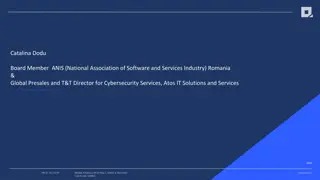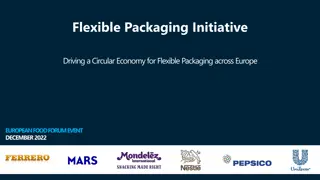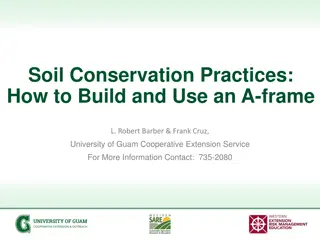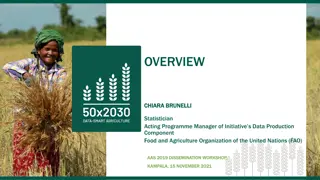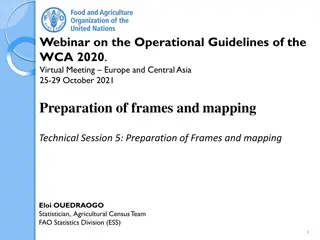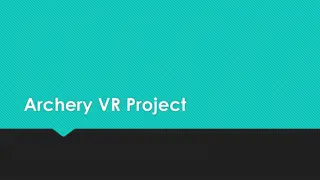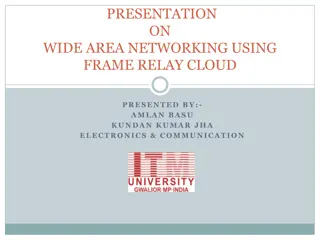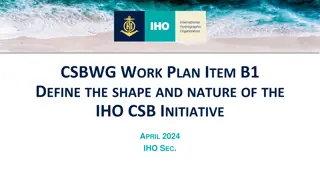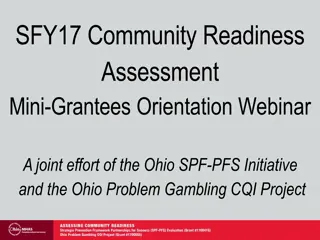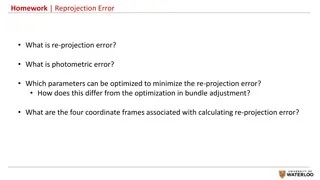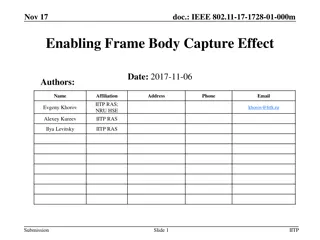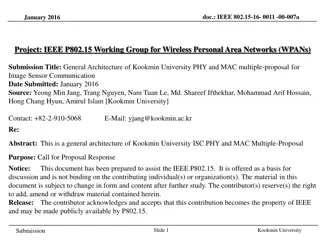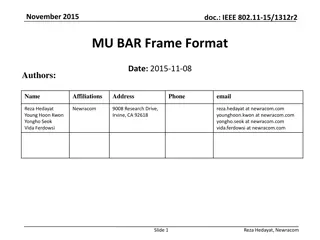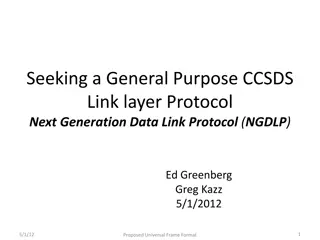Full Frame Initiative (FFI)
FFI, or Full Frame Initiative, is a holistic approach aimed at supporting individuals facing complex challenges by maximizing survivor assets and minimizing tradeoffs. The Five Domains of Wellbeing—Social Connectedness, Safety, Stability, Mastery, and Meaningful Access to Resources—are crucial in this approach. FFI recognizes that people at the intersection of poverty, trauma, violence, and oppression need services that consider all aspects of their wellbeing to create lasting change. Understanding tradeoffs is key to making decisions that positively impact wellbeing.
Download Presentation

Please find below an Image/Link to download the presentation.
The content on the website is provided AS IS for your information and personal use only. It may not be sold, licensed, or shared on other websites without obtaining consent from the author.If you encounter any issues during the download, it is possible that the publisher has removed the file from their server.
You are allowed to download the files provided on this website for personal or commercial use, subject to the condition that they are used lawfully. All files are the property of their respective owners.
The content on the website is provided AS IS for your information and personal use only. It may not be sold, licensed, or shared on other websites without obtaining consent from the author.
E N D
Presentation Transcript
Full Frame Initiative (FFI) NEW HIRE ORIENTATION
WHAT IS FFI? FFI is an approach to working with people facing multiple and complex challenges that focuses on overall wellbeing and supports lasting change. FFI works to maximize the number of survivor assets while minimizing the number of tradeoffs that come with change or opportunity. This approach translates into an emphasis on the Five Domains of Wellbeing.
THE FIVE DOMAINS OF WELLBEING
THE FIVE DOMAINS EXPLAINED Social connectedness The degree to which we have and perceive a sufficient number and diversity of relationships that allow us to give and receive information, emotional support and material aid; create a sense of belonging and value; and foster growth. Safety The degree to which we can be our authentic selves and not be at heightened risk of physical or emotional harm. Stability The degree to which we can expect our situation and status to be fundamentally the same from one day to the next; where there is adequate predictability for us to concentrate on the here-and-now and on the future, growth and change; and where small obstacles don t set off big cascades. Mastery The degree to which we feel in control of our fate and the decisions we make, and where we experience some correlation between efforts and outcomes. Meaningful access to relevant resources The degree to which we can meet needs particularly important for our situation in ways that are not extremely difficult, and are not degrading or dangerous.
WHY FFI? Individuals and families living at the intersection of poverty, trauma, violence, and oppression face constant threats to their wellbeing. Services designed to help them address a challenge in one area, gaining housing for example, may come with tradeoffs in other areas that aren t taken into consideration.
Often a decision or change we make, big or small, comes with a cost or consequence: a tradeoff. Sometimes the benefit from the decision or change outweighs the tradeoff; sometimes it doesn t. WHAT ARE TRADEOFFS? Weighing the benefits to our wellbeing against the tradeoffs whenever we make a decision is highly personal. We are less likely to stick to a decision or sustain change when tradeoffs are too great and significantly diminish other aspects of our wellbeing.
TRADEOFF EXAMPLE Jane has been working at the same job for eight months and is thriving. She is offered housing but it s not on an efficient bus route to Jane s workplace so Jane declines. Jane then goes back to the bottom of the housing list, or worse, is disqualified from housing assistance altogether. OR Jane accepts the housing and continues to use the bus to get to work. However, the inefficient route with numerous stops and bus changes frequently make her late for work. As a result she loses her job along with the support network she developed at work, and she now can t afford her rent. She is one month away from homelessness.
Jane and her children have formed social connections at work and school. If she accepts housing, they will lose those connections. While in shelter, Jane and her children have attended counseling. If she accepts housing, the new bus route will be inefficient for continued services. This housing opportunity will provide permanent housing stability. Jane and her children are safe in shelter. If she accepts housing, she will have to rely on her abuser to get the children to school. Jane has developed better decision- making skills while in shelter. She is now confident in her ability to make good decisions for her family.
HOW DO WE USE FFI? It s in the language we use! It guides how residents use the boutique! It s in the classes/activities we offer! It s how the Development team talks to donors and the community! It s in the client paperwork we use! It s how case managers structure their meetings and work with clients! It s how our Kitchen accommodates special dietary needs! It s how the Advocates handle day-to- day interactions and crisis interventions with clients! It s in our social media! It s in our volunteer orientation! It s how the FJC Navigators structure their work with clients! It s how Family Advocates structure their programming! It s the maintenance and upkeep of shelter! It guides the grants we apply for!




